Perhaps ‘madness’ is a bit overmuch, but I cannot be the judge. You will recall the recent post highlighting the strange gourds I’ve grown this summer just ending. Swan gourds. Of course growing them leads to research about what they are. They are of the genus Lagenaria and end up having hard shells, shells that humans have used across time for drinking and storing liquids and for making musical instruments. As I looked at the instruments that have been made the thing that jumped out at me was the tremendous variety and number of them – that somehow these gourds spoke very powerfully to a very broad spectrum of humans, that they had something musical to offer. Anyway, long story short, I took the bait, bought me some gourds, a few skins too – because why not go for ancient approaches to resonance – and off into the madness of gourds I went.
First, a practice gourd – because I got a really big one and a kangaroo skin for it but I don’t want to screw it up, so I decided to make a fretless three string gourd banjo just as a proof of concept. Pictured are the first practice gourd cut in half and another as yet unopened. Cut very easily with a ryoba. Had to sand the insides.
Detail of sanded half gourd.
Now one thing apparently is that gourds are close friends of mold so to keep the mold away I decided to paint the inside, to seal it too – the magic of Rustoleum cannot be underestimated – like so
I selected what looked like a nice neck, of mulberry.
Did the initial shaping
Made tuning pegs and a nut of some found/re-purposed wenge, and called it a day, the first. On the second day carefully I cut rectangles into the gourd on opposite sides about 5/8 of an inch from the top. It’s one to sneak up on (approach incrementally).
That done, I soaked a circular piece of goat skin in water and had let it almost dry. 32 copper tacks, half on the rim, half over the side
oh, a bridge of wenge too – a little ahead of myself here. This is where, on day two, when getting to that first string, things broke down a little.
The nut split – it was too tall anyway, and one of the pegs broke, but moreover it was the design that just could not work. The friction of the pegs was weak and how high the strings were above the plane of the head/neck was just dooming. End of day 2 with one string that could make some stringy noises but nothing special.
Day 3 brought reconsideration of the head – what about an irregular thing with side pegs?
This design would/could/should work, so that’s what I did.
To get the friction right I used 1/4 inch dowels sanded down a tiny bit in 7/32 peg holes. Sanding less on the outside creates tightness as they are pushed in. From there it’s just adding strings and tuning – the latter of which is completely non-trivial to me.
This project has not seemed like a fail, although I think it does not earn me the title ‘Luthier’ – in fact, my estimation of what that title properly entails has gone way way up. I’m sticking with ‘Butcher’ for the time being. A few reports should follow this, one on tuning and associated positive results, the second on the full giant gourd fretless kangaroo four string that lurks waiting in the shadows of imagination.

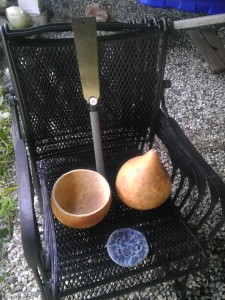
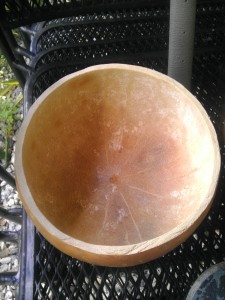
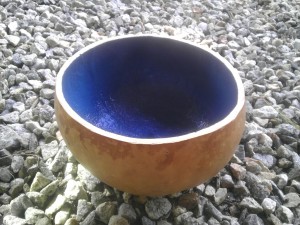
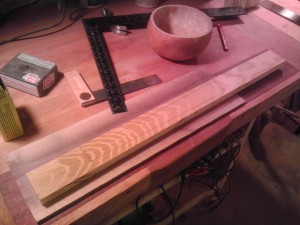
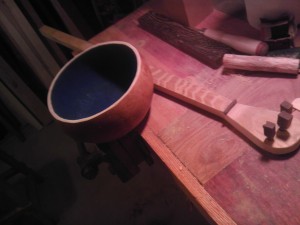
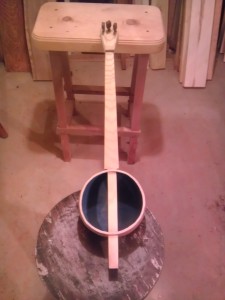
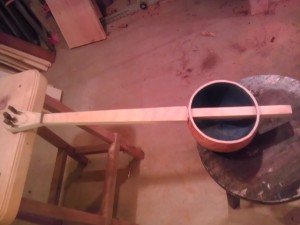
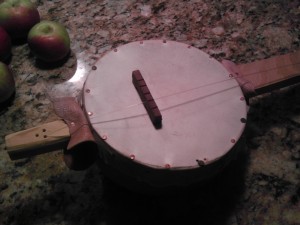
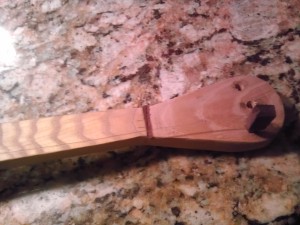
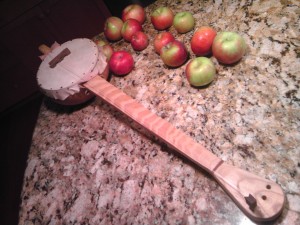
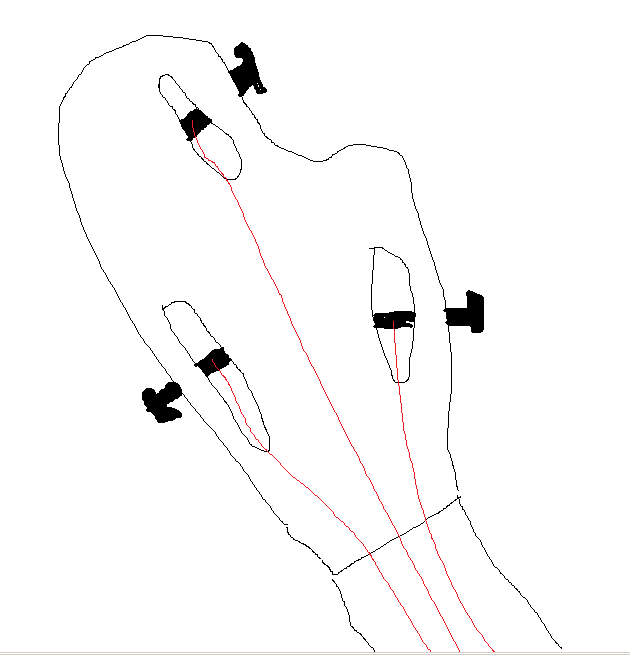
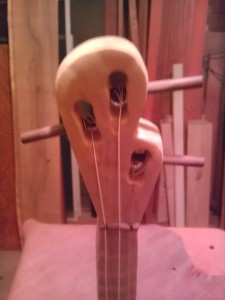
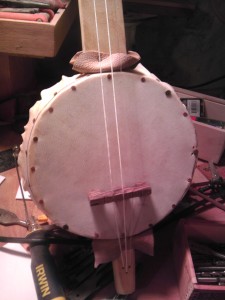
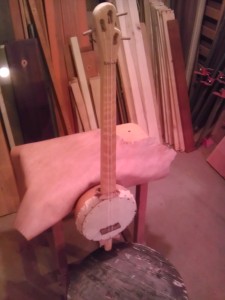
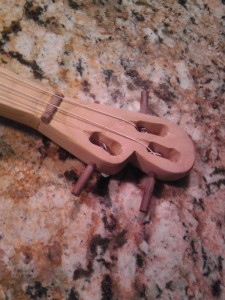
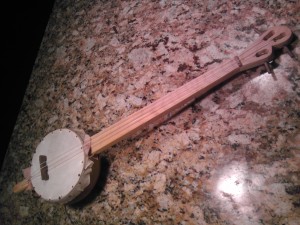
Pingback: Harvest of Music | Splashdown
Pingback: Gourd Mbira | Splashdown
inspiring!
What does it sound like?
sounds basically like a mbira (thumb piano), perhaps a little more resonant. Sorry for the slow reply – sometimes I barely visit my own site!
oops – I thought this was about the mbira. No, this is about the banjo. It has troubl holding string tension, so often it sounds like nothing at all. When I do get a nice tune though, and I get one of my more musical offspring to make noises with it, it is resonant and toneful, though the fretlessness makes precision in note selection yet another conundrum